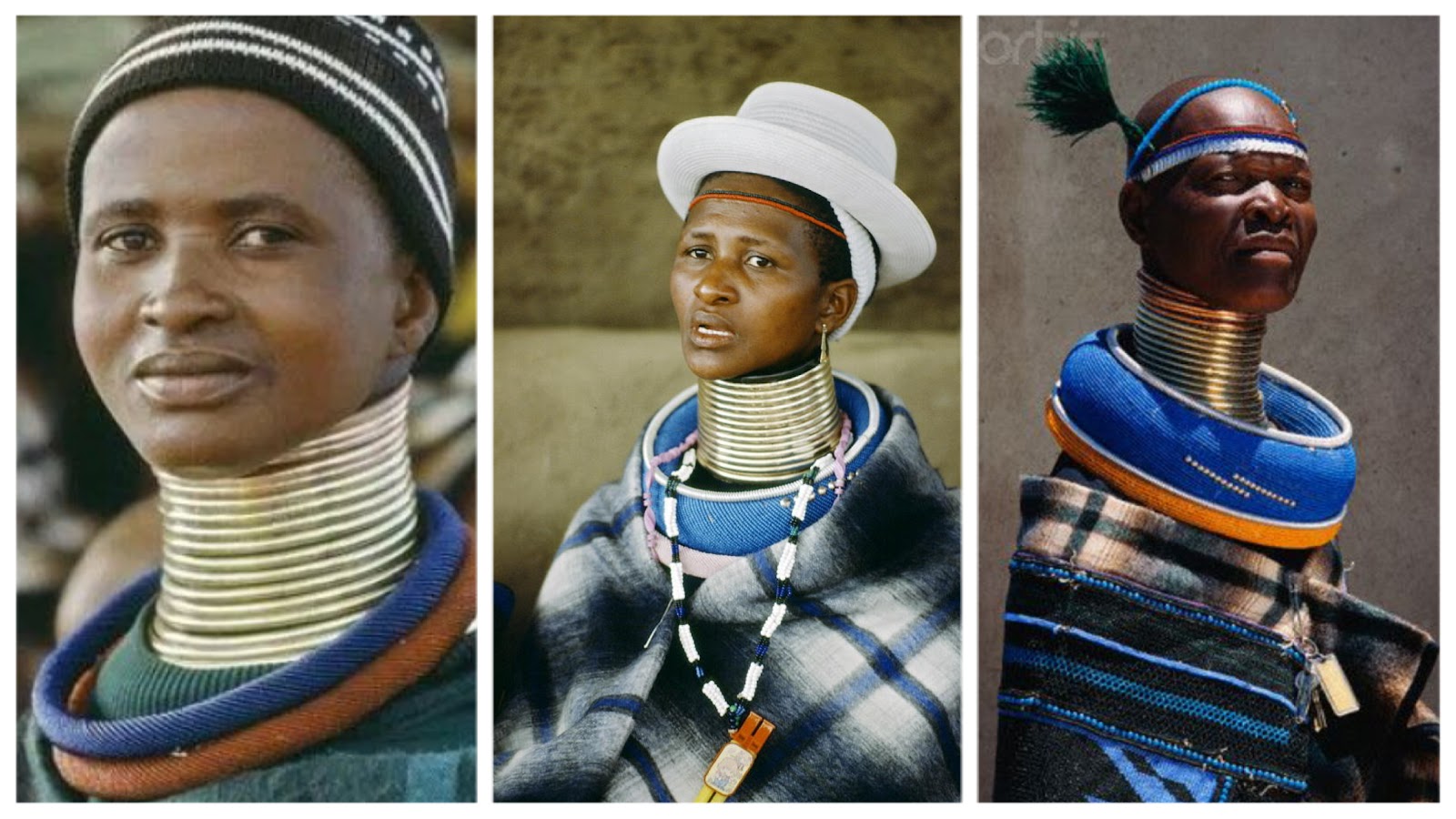The Ndebele people are a Bantu ethnic group in southern Africa, with a large population in South Africa and Zimbabwe. They are known for their distinctive beadwork and their traditional dress, which includes neck rings.
Ndebele tribe women with long neck rings
The neck rings, called dzilla, are made of copper or brass and are stacked in multiples of three. They are worn by married women as a sign of wealth and status. The number of rings worn indicates the woman's age and social rank.
The dzilla are believed to have originated in the 18th century, when the Ndebele people migrated from what is now Zimbabwe to South Africa. The rings were originally worn by men as well as women, but they are now only worn by women.
The dzilla are not thought to actually elongate the neck. However, they do compress the collarbones and can cause the neck to appear longer. The rings can also be heavy, and they can put pressure on the neck and shoulders.
Despite the potential discomfort, many Ndebele women continue to wear the dzilla. They see them as a symbol of their culture and heritage.
Here are some additional facts about the Ndebele tribe's neck rings:
The rings are usually made by male craftsmen and custom fit for each individual.
The rings are often decorated with intricate patterns and designs.
The rings can be quite expensive, and they are often passed down from generation to generation.
The Ndebele believe that wearing the dzilla was ordained by their ancestors.
In recent years, some Ndebele women have begun to replace the traditional metal rings with plastic rings. This is done in an effort to reduce the risk of injury and to make the rings more comfortable to wear.





